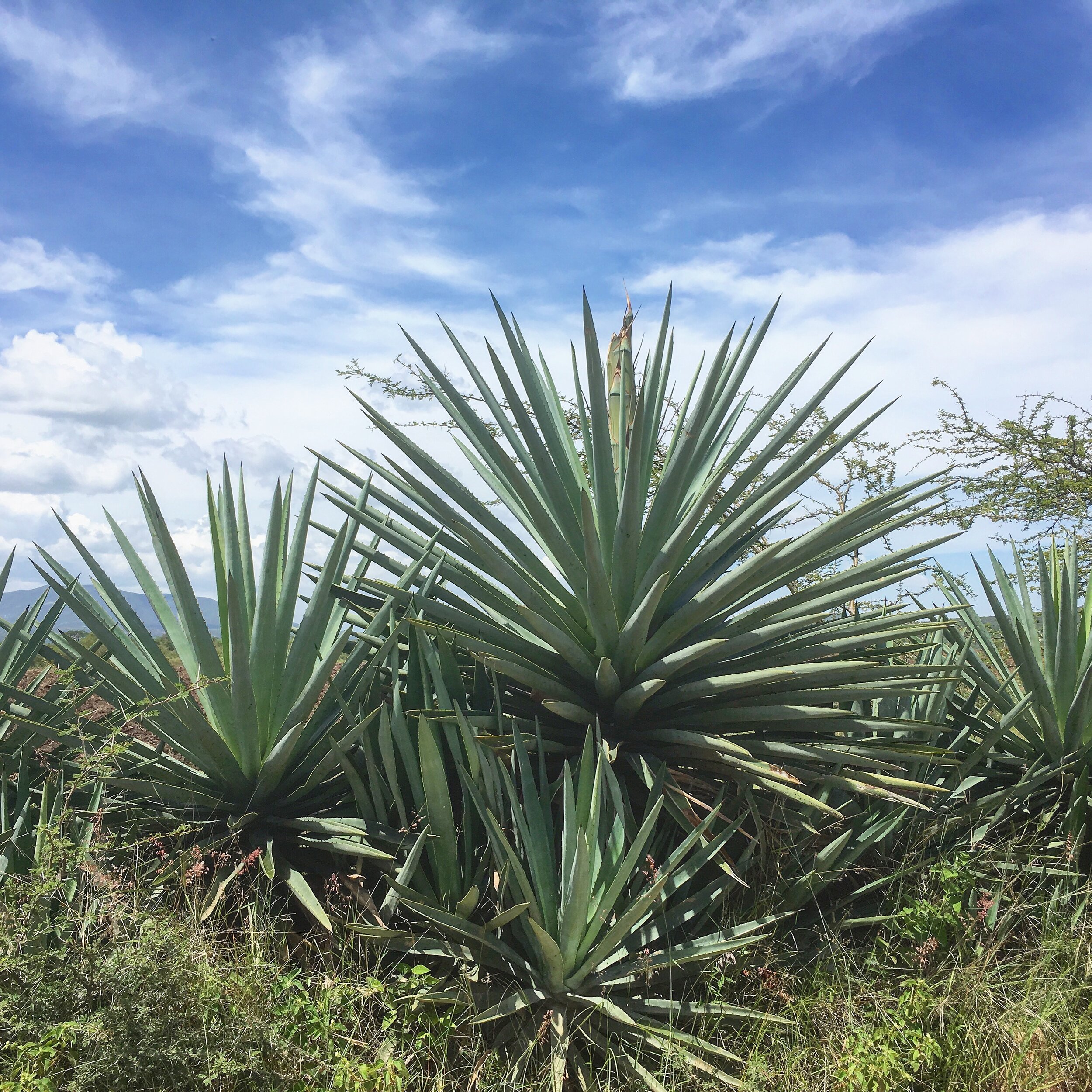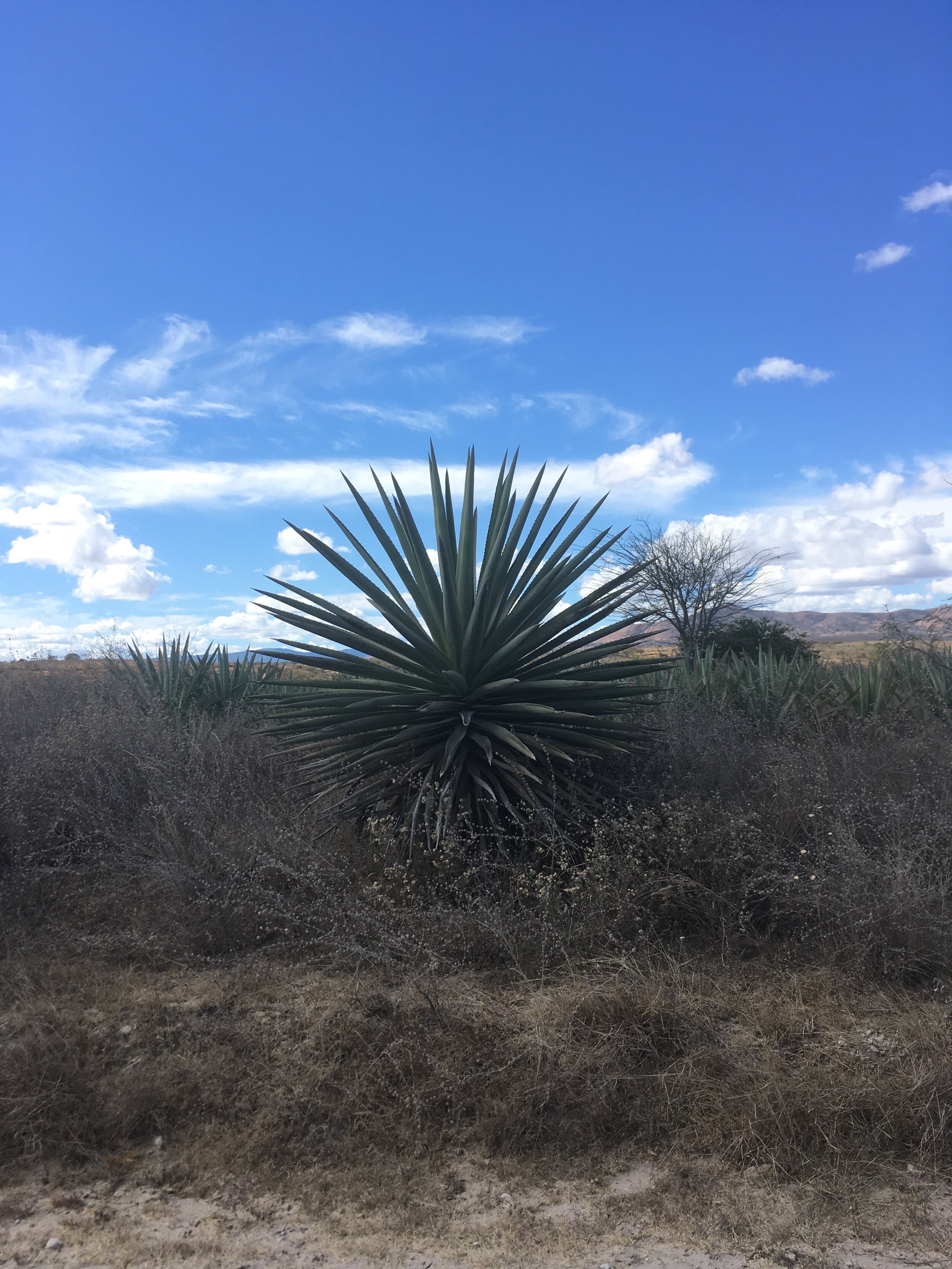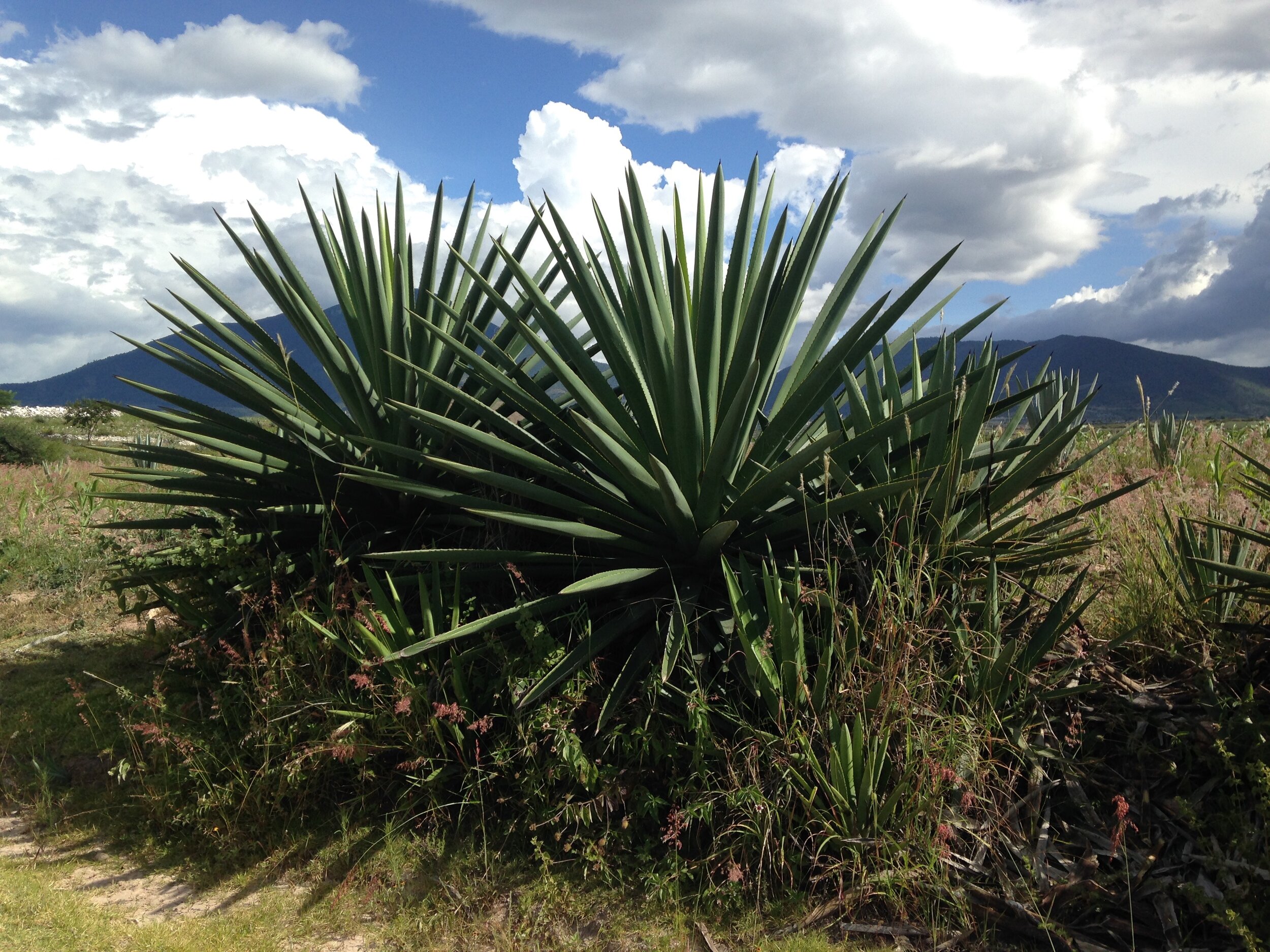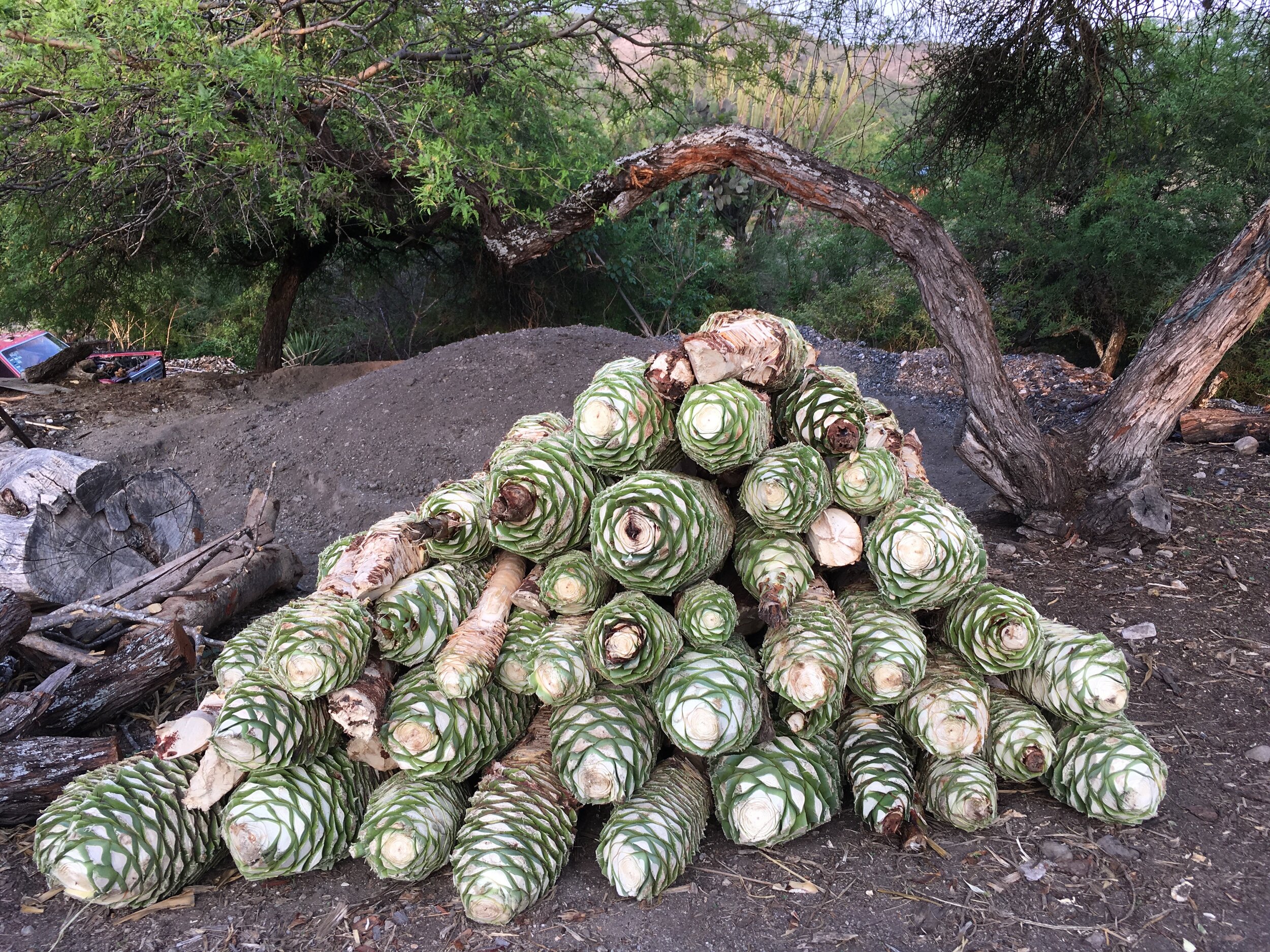Madrecuixe (Agave Karwinskii)
The maguey known locally as “Madrecuixe” is a truly remarkable plant. Similar in appearance to what is known by the same name in other parts of Oaxaca, this Madrecuixe is a distinct subspecies endemic to Miahuatlán. Characterized by a large, light-blue, spherical rosette, Madrecuixe can weigh anywhere from 60 pounds to more than 200, depending on its environment.
Cultivated for centuries, if not millennia, as a food and beverage source, Madrecuixe is renowned for its exquisite flavor as well as its genetic potential. In Miahuatlán, this particular Karwinskii cultivar has the title madre, meaning mother, because the plant, with the assistance of bats, is capable of cross-pollination and produces seed that develops into very distinct agave varieties. Seed from the Miahuatlán Madrecuixe will often yield the varieties known locally as Verde (or Cuixe Verde), Tobaziche, and Coyote. One can also find agave that resemble Tobalá, Jabalín, and some Americana types, all born from Madrecuixe seed.
Often, the mezcaleros and growers find expressions that they themselves have never seen and cannot identify. This type of mixed outcome is so commonplace, that in order to ensure the reproduction of Madrecuixe, many maestros prefer to simply transplant the offsets that propagate from the agave’s root system. However, growing from seed ensures strong and healthy plants while also maintaining the biodiversity for which Miahuatlán is so renowned.
Habitat: Xeric shrublands, tropical deciduous forest and protected along roads or bordering farmland; on limestone or sandy sedimentary soils. At elevations of 900-1500 m.
Phenology: Blooms from September to October and fruits from November to January.





